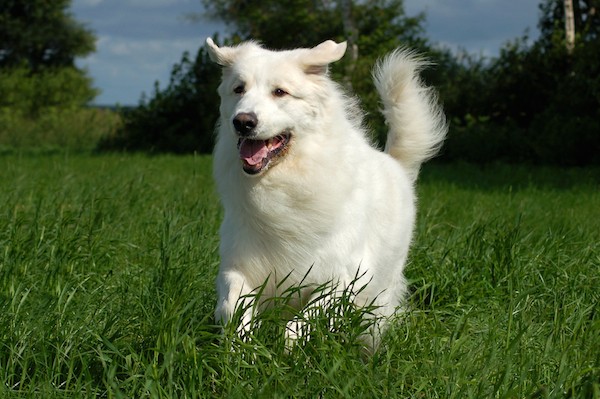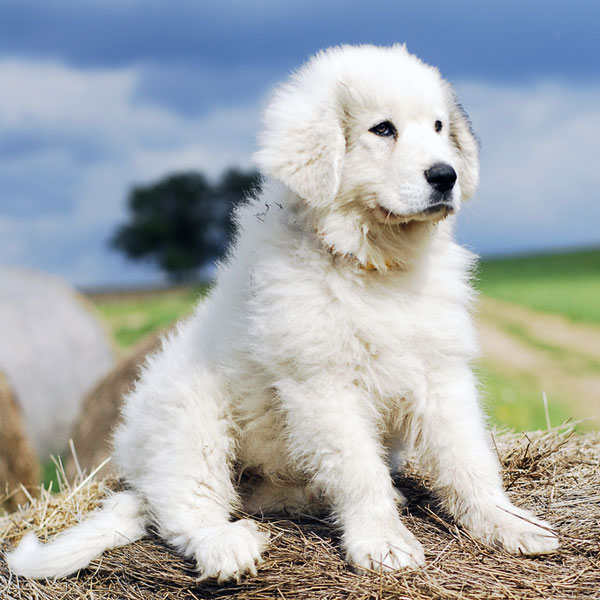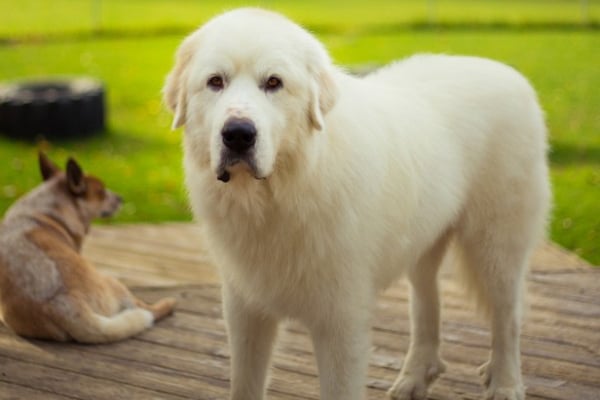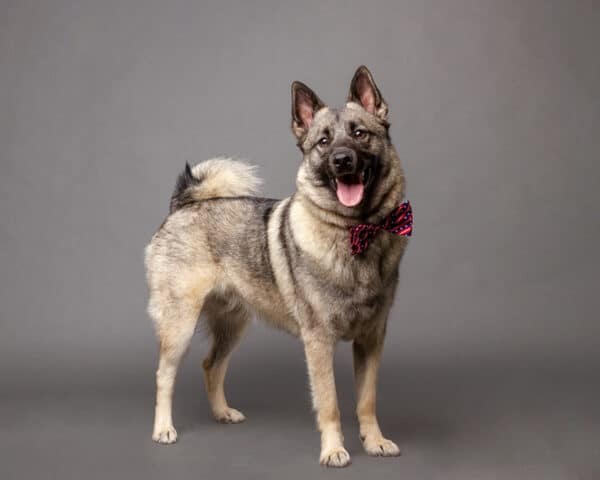Quick Facts
- Weight: 100 – 125 pounds (45.36 – 56.70 kg)
- Height: 27 – 32 inches (68.58 – 81.28 cm)

The Look of a Great Pyrenees
Great Pyrenees have large, solid frames covered in coarse, white coats that are either straight or wavy. Their snowy fur can also have patches of gray and tan. Great Pyrenees have broad chests and wide backs that give them a boxy look. They have wedge-shaped heads with slightly rounded skulls and medium-sized muzzles. Their dark brown eyes have a dignified but alert expression, and their noses and lips are black. They have well-plumed tails that hang low. Overall, the look of the Great Pyrenees mingles nobility with strength and endurance.
Traits
- Handsome
- Distinguished
- Gentle
- Intelligent
- Loyal
- Protective
Ideal Human Companion
- Singles
- Families
- Outdoorsy types
- Cold-climate dwellers

What They Are Like to Live With
Great Pyrenees are handsome dogs—inside and out. Not only are they hardworking and tough, but they also have a keen understanding of people. Some dog experts believe this is a genetic quality earned from years of mountainside isolation with shepherds. They are gentle, patient and obedient—quick to learn and eager to please. And they’re also extremely soft and huggable.
Great Pyrenees could be described as “everybody’s pal.” They get along with the whole family, friends, strangers and other pets. However, they are not happy-go-lucky types. Great Pyrenees have a serious side—an interesting mix of “lone-wolf” independence and selfless concern for others. If you live in the country, your Great Pyrenees might wander off for hours to make sure “the borders” are safe. In every sense, they make superb watchdogs—protective, intimidating and calm.
Things You Should Know
Great Pyrenees have a tender, sensitive side. When training them, offer lots of positive reinforcement and rewards. Facing harsh criticism or impatience, they will most likely turn away and ignore the rest of the training.
These dogs were built for cold weather. If you live in a hot climate, try to keep them indoors or allow them plenty of shade and water. Also, they tend to drool and slobber when exerting themselves, so you might want to keep a few rags handy.
A healthy Great Pyrenees can live as long as 10 years. Common health issues include skin problems, hip dysplasia and some skeletal disorders. Their thick double-coat needs regular brushing. They have one heavy shedding season, but you should expect to see clumps of fur year-round.
Great Pyrenees History
Great Pyrenees have been guarding sheep in the Pyrenees Mountains (on the border between France and Spain) since 1800 B.C., but historians believe they originally came from Asia. Their excellent sense of smell and intelligence made them invaluable herders on the steep mountain slopes. Since the early 18th century, Great Pyrenees have won the hearts of many, proving themselves time and again as popular show dogs, farm dogs and companions.





